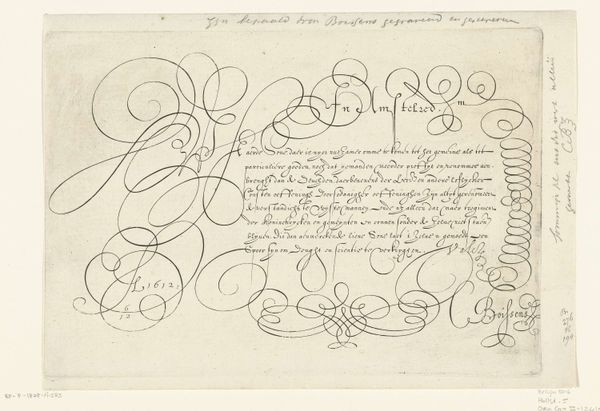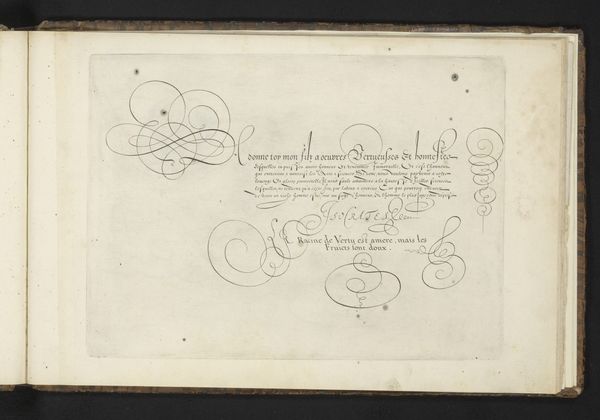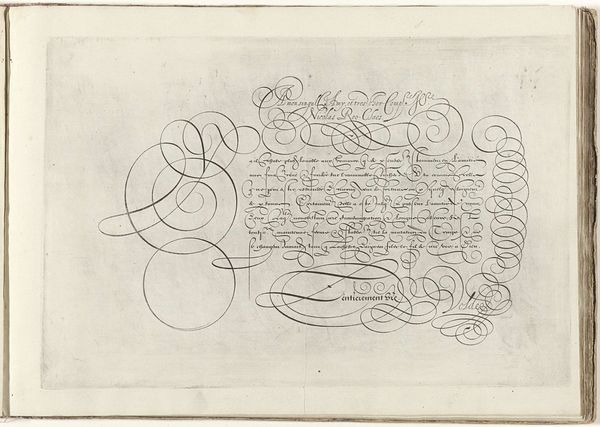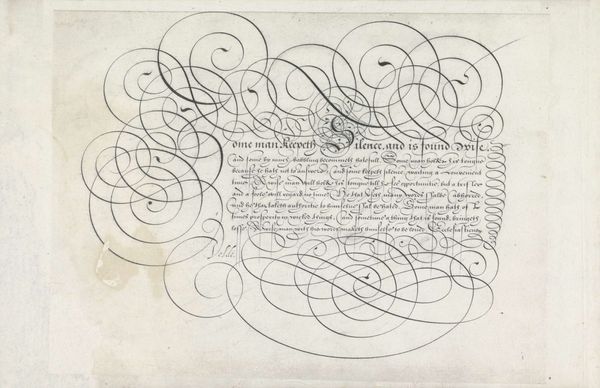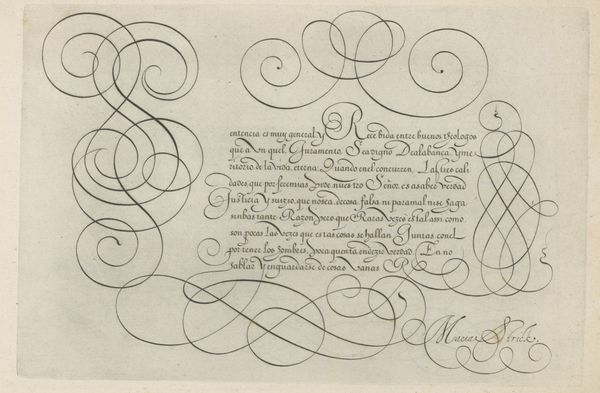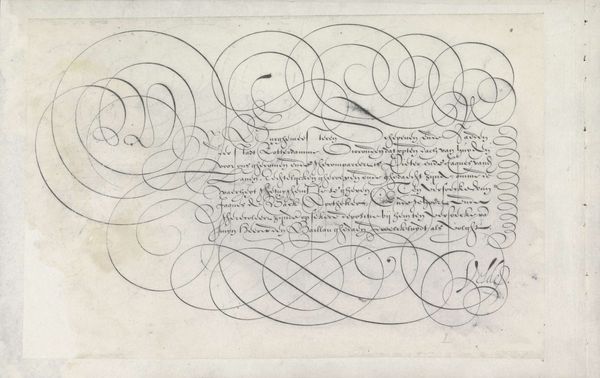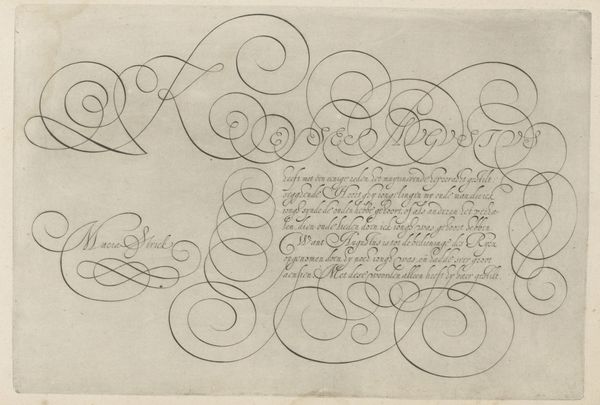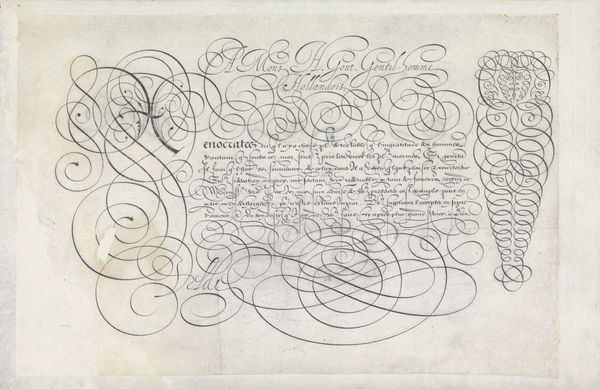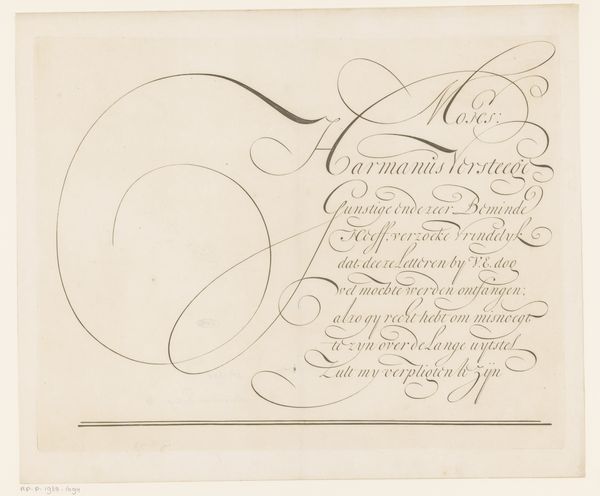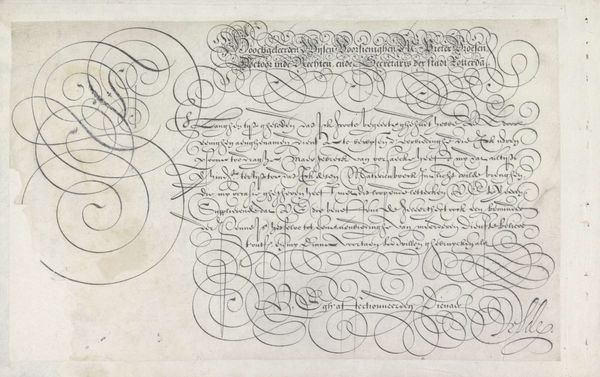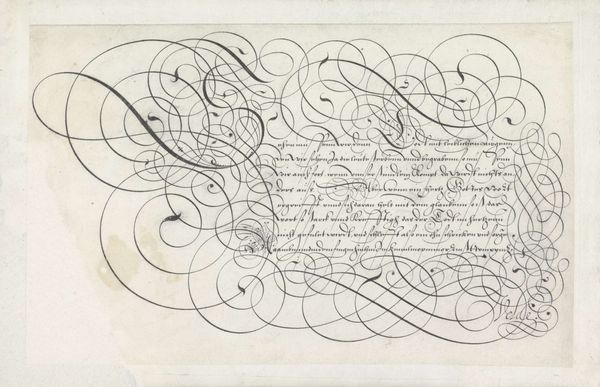
drawing, print, paper, ink, engraving
#
drawing
#
script typography
#
hand-lettering
# print
#
old engraving style
#
hand drawn type
#
hand lettering
#
paper
#
11_renaissance
#
personal sketchbook
#
ink
#
hand-drawn typeface
#
fading type
#
pen work
#
golden font
#
northern-renaissance
#
engraving
#
calligraphy
Dimensions: height 192 mm, width 178 mm
Copyright: Rijks Museum: Open Domain
Curator: Here we have a striking example of Renaissance calligraphy. Dating from 1603, this engraving on paper, created with ink, bears the title "Kalligrafie: 'Lenicus mijn bemind soone …'". Editor: Immediately, the delicate flourishes capture my attention, evoking a sense of disciplined elegance and perhaps even a hidden message amidst its intricate form. Curator: The script itself offers a fascinating glimpse into social dynamics. Documents like this were carefully made. As such, calligraphy was a skill connected to the creation of societal roles in administration, justice, commerce, and education. Who could write determined in some way their place within the structures of the city, for example. Editor: Absolutely, and I wonder about access to literacy and script styles at this time. Who got to learn calligraphy? The composition reminds me of the way personal identity in our moment relies on the written word for validation. Think about the emphasis we put on journaling for self-discovery or letter writing as emotional regulation. Who was this message for, and why write it this way? Curator: Indeed. Calligraphy served not just a functional purpose, but was a highly respected art form with clear ties to identity. Its aesthetic was valued within society. In the Dutch Golden Age, one's handwriting might be a statement of education and class. Editor: What do we know about calligraphy and gender roles, though? Considering that we often associate highly stylized fonts with the decorative, it’s important to inquire about whether these scribal conventions enforced expectations around gender at this time. Curator: It’s a crucial point. Looking through this lens, it seems the very act of penmanship might reflect both individual expression and broader cultural norms regarding acceptable forms of display. Editor: This close look at "Kalligrafie: 'Lenicus mijn bemind soone …'" challenges us to reconsider calligraphy’s purpose and role as not just functional or beautiful but powerful too. Curator: A perfect synthesis between history, art, and critical social reflection.
Comments
No comments
Be the first to comment and join the conversation on the ultimate creative platform.
